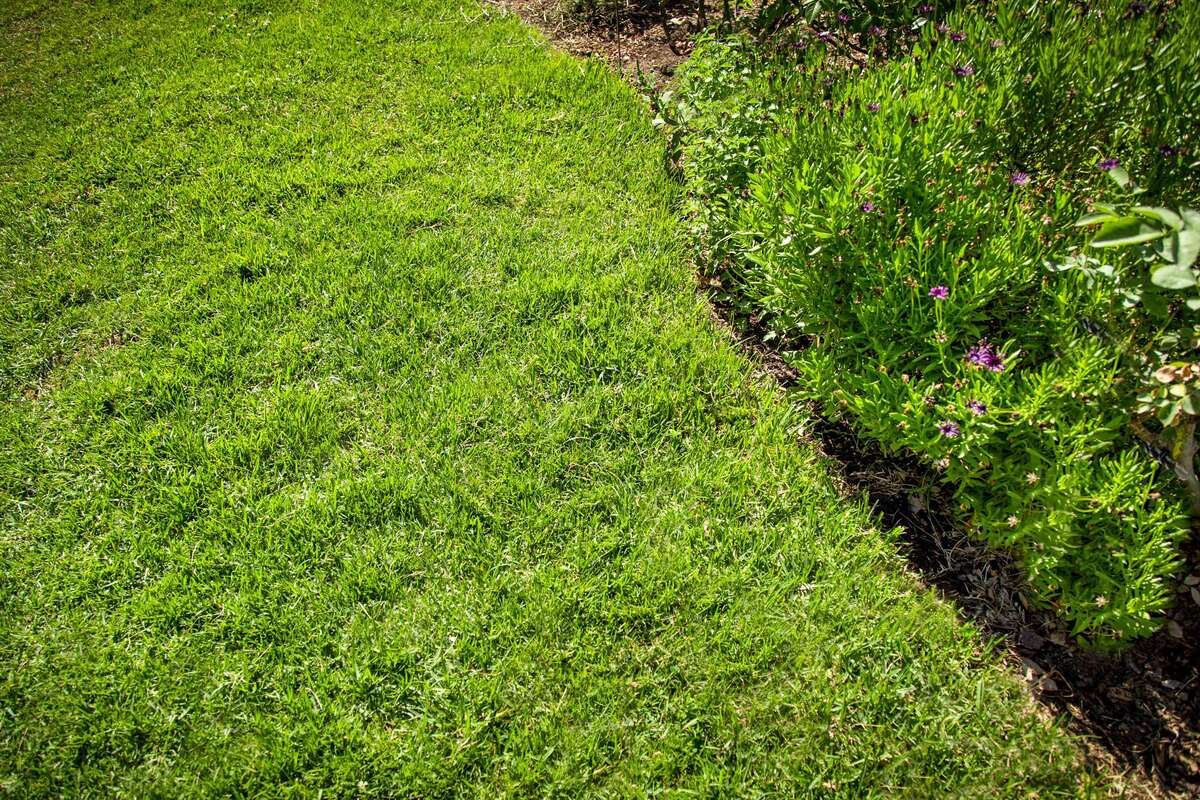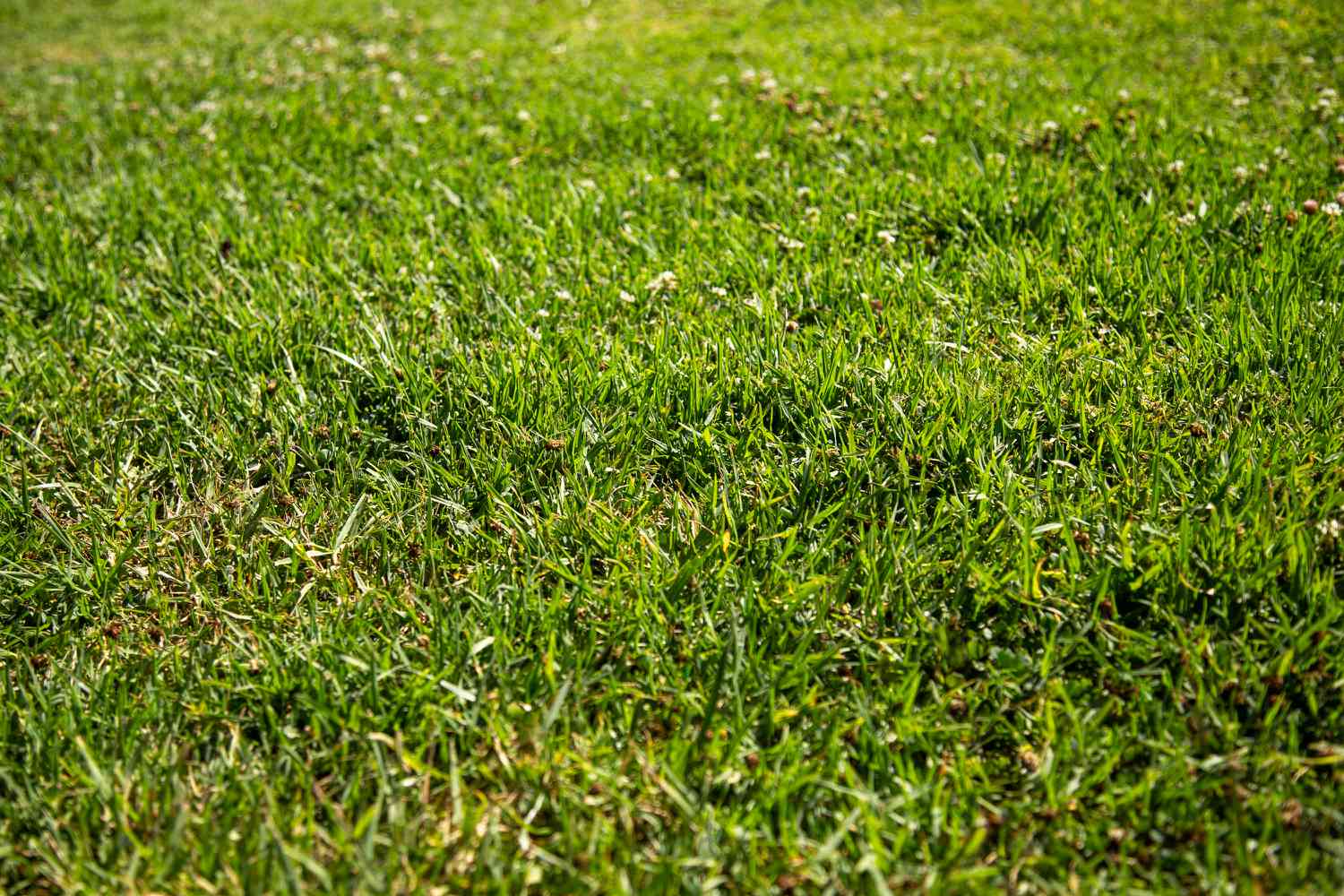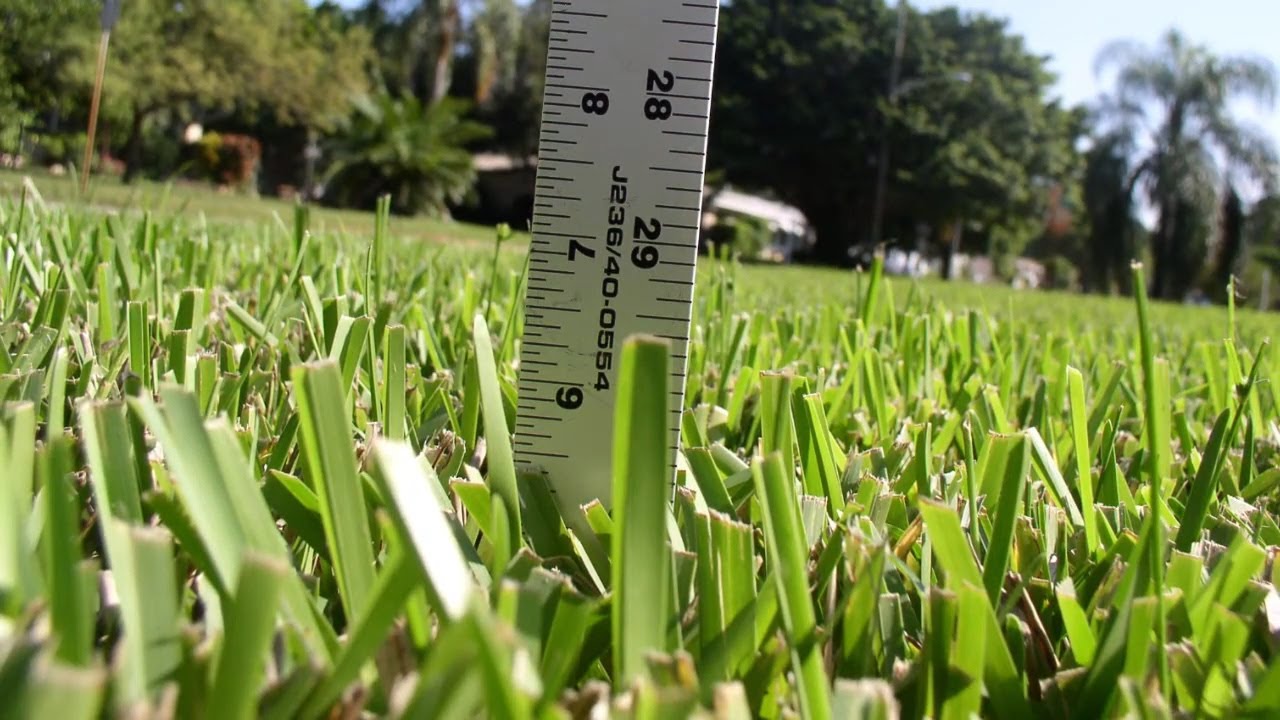Home>Gardening & Outdoor>Landscaping Ideas>How To Take Care Of St. Augustine Grass


Landscaping Ideas
How To Take Care Of St. Augustine Grass
Modified: August 17, 2024
Learn the best landscaping ideas for taking care of St. Augustine grass. Discover expert tips for maintaining a healthy and vibrant lawn.
(Many of the links in this article redirect to a specific reviewed product. Your purchase of these products through affiliate links helps to generate commission for Storables.com, at no extra cost. Learn more)
Introduction
So, you've decided to cultivate a lush, vibrant lawn, and you've chosen St. Augustine grass as your green canvas. Excellent choice! St. Augustine grass is a popular warm-season turfgrass known for its dense, plush carpet-like appearance and shade tolerance. However, maintaining its beauty requires some effort and expertise. Fear not, though, as I'm here to guide you through the ins and outs of caring for St. Augustine grass.
In this comprehensive guide, we'll delve into the essential aspects of St. Augustine grass care, covering everything from watering and fertilizing to mowing and pest control. By the end of this journey, you'll be equipped with the knowledge and skills to nurture a thriving St. Augustine lawn that will be the envy of the neighborhood.
So, grab your gardening gloves and let's embark on this green adventure together!
Key Takeaways:
- St. Augustine grass needs 1-1.5 inches of water per week, deep but infrequent watering, and early morning watering to thrive. Proper watering fosters a resilient and visually appealing lawn.
- Maintaining St. Augustine grass involves balanced fertilization, moderate mowing, and proactive weed and pest management. By addressing common issues, you can cultivate a vibrant and inviting outdoor space.
Understanding St. Augustine Grass
Before diving into the specifics of caring for St. Augustine grass, it's essential to understand the nature of this resilient turfgrass. St. Augustine grass (Stenotaphrum secundatum) is a warm-season grass variety that thrives in tropical and subtropical regions, making it an ideal choice for lawns in such climates. Its broad, flat blades and lush, dense growth habit give it a visually appealing, carpet-like appearance.
One of the key attributes of St. Augustine grass is its shade tolerance, making it suitable for lawns with partial shade or filtered sunlight. However, it also requires a moderate amount of direct sunlight to maintain its vigor and lush green color. Additionally, St. Augustine grass exhibits excellent heat tolerance, allowing it to withstand the sweltering temperatures often experienced in its preferred growing regions.
When it comes to soil preferences, St. Augustine grass thrives in well-draining soil with a slightly acidic to slightly alkaline pH range. It is crucial to ensure adequate soil moisture without waterlogging, as excessive moisture can lead to disease issues. Understanding these fundamental characteristics of St. Augustine grass lays the groundwork for providing the optimal growing conditions to support its health and vitality.
Furthermore, St. Augustine grass is known for its rapid lateral growth, which helps it fill in bare patches and create a dense turf. This growth habit also contributes to its ability to outcompete weeds when properly cared for. However, its vigorous growth can also lead to thatch buildup if not managed appropriately, a factor to consider when devising a maintenance plan.
By comprehending the unique traits and growth habits of St. Augustine grass, you can tailor your lawn care practices to meet its specific requirements, ultimately fostering a resilient and visually stunning turf that enhances the beauty of your outdoor space.
Watering St. Augustine Grass
Proper watering is crucial for the health and vitality of St. Augustine grass, as it directly impacts its ability to withstand environmental stress and maintain its lush appearance. When establishing a watering regimen for St. Augustine grass, it’s essential to strike a balance that provides adequate moisture without promoting waterlogged conditions that can invite disease and root issues.
St. Augustine grass generally requires about 1 to 1.5 inches of water per week, either from rainfall or irrigation. However, this requirement can vary based on factors such as soil type, temperature, and sunlight exposure. During periods of active growth or hot, dry weather, the grass may benefit from slightly increased watering to sustain its vigor.
It’s advisable to water St. Augustine grass deeply but infrequently, encouraging the development of a robust root system that can access moisture from deeper soil layers. This approach also helps the grass withstand drought conditions more effectively. Early morning is the optimal time for watering, as it allows the grass blades to dry quickly, reducing the risk of fungal diseases.
When determining the frequency and duration of watering, consider the specific needs of your lawn based on its microclimate and environmental conditions. Observing the grass for signs of moisture stress, such as wilting or a bluish-gray hue, can help you adjust your watering schedule to meet its needs effectively.
Implementing irrigation methods that deliver water evenly across the lawn, such as sprinklers with proper coverage, ensures uniform hydration and minimizes the risk of overwatering in some areas and underwatering in others. Additionally, incorporating a rain gauge or utilizing smart irrigation technology can aid in monitoring and adjusting water application based on actual environmental conditions.
By understanding the significance of proper watering and tailoring your approach to accommodate the specific requirements of St. Augustine grass, you can foster a resilient and visually appealing lawn that thrives in its environment, enhancing the overall beauty of your outdoor landscape.
Fertilizing St. Augustine Grass
Fertilizing St. Augustine grass is a fundamental aspect of lawn care that directly influences its growth, color, and overall health. By providing the grass with essential nutrients, you can promote vigorous growth and a vibrant green hue, enhancing the visual appeal of your lawn. Understanding the key principles of fertilization and tailoring your approach to meet the specific needs of St. Augustine grass are crucial for achieving optimal results.
Before initiating a fertilization regimen, it’s beneficial to conduct a soil test to assess the nutrient levels and pH of the soil. This information can guide you in selecting the appropriate fertilizer formulation and determining the specific nutrient requirements of your lawn. In general, St. Augustine grass benefits from a balanced fertilizer with a nitrogen-phosphorus-potassium (N-P-K) ratio tailored to its growth phase and the existing soil conditions.
During the active growing season, which typically spans spring through early fall, St. Augustine grass can benefit from regular fertilization to support its growth and vitality. However, it’s important to avoid overfertilization, as excessive nitrogen can lead to thatch buildup and increase the grass’s susceptibility to certain diseases. Following the recommended application rates and timing guidelines provided by reputable sources or local extension services is essential for preventing fertilizer-related issues.
Applying fertilizer when the grass is actively growing and the soil is moist can enhance nutrient uptake and utilization, maximizing the positive impact of the fertilizer on the lawn. Additionally, incorporating slow-release or controlled-release fertilizers can provide a steady, consistent supply of nutrients to the grass over an extended period, reducing the risk of nutrient leaching and minimizing the need for frequent applications.
When fertilizing St. Augustine grass, it’s crucial to distribute the fertilizer evenly across the lawn to ensure uniform nutrient availability and prevent localized issues such as uneven growth or discoloration. Properly calibrating and maintaining your fertilizer spreader can help achieve uniform coverage and minimize the risk of fertilizer burn caused by overapplication in concentrated areas.
By approaching fertilization with a thorough understanding of St. Augustine grass’s nutrient requirements and growth patterns, you can foster a healthy, vibrant lawn that serves as a captivating centerpiece of your outdoor landscape, providing a lush and inviting setting for relaxation and recreation.
Mowing St. Augustine Grass
Proper mowing practices play a pivotal role in maintaining the health, aesthetics, and resilience of St. Augustine grass. By adhering to appropriate mowing techniques tailored to the specific characteristics of this warm-season turfgrass, you can promote a well-groomed appearance and support its overall vigor. Understanding the optimal mowing height, frequency, and equipment considerations is essential for nurturing a thriving and visually appealing lawn.
St. Augustine grass exhibits a preference for a moderate mowing height, typically ranging between 2.5 to 4 inches. Maintaining the grass at this height range helps promote a dense, lush turf while aiding in weed suppression and reducing moisture loss from the soil. It’s important to avoid excessively low mowing, as this can stress the grass and impede its ability to withstand environmental challenges.
When establishing a mowing schedule for St. Augustine grass, it’s beneficial to adhere to a frequency that aligns with its growth rate and the prevailing weather conditions. During periods of active growth, which commonly occur in the warmer months, more frequent mowing may be necessary to manage the grass’s rapid lateral expansion and maintain the desired height. Conversely, adjusting the mowing frequency during periods of slower growth can help prevent stress and promote a healthy turf.
Utilizing a sharp mower blade is essential for achieving clean, precise cuts that minimize damage to the grass blades and support rapid recovery. Dull blades can tear the grass, creating jagged edges that increase moisture loss and leave the lawn vulnerable to disease. Regularly inspecting and sharpening the mower blade as needed is crucial for ensuring a professional-quality cut that contributes to the overall well-being of the lawn.
It’s advisable to vary the mowing direction with each session, alternating between vertical, horizontal, and diagonal patterns. This practice helps prevent the grass from developing a grain pattern and encourages upright growth, resulting in a more uniform and aesthetically pleasing appearance. Additionally, refraining from mowing a wet lawn can minimize the risk of compacting the soil and causing damage to the grass.
By embracing these mowing best practices and tailoring your approach to the specific needs of St. Augustine grass, you can cultivate a well-manicured lawn that exudes beauty and vitality, providing a welcoming and visually striking backdrop for your outdoor activities and leisure time.
Read more: How To Fertilize St. Augustine Grass
Controlling Weeds and Pests
Maintaining a healthy and vibrant St. Augustine grass lawn involves proactive management of weeds and pests that can detract from its beauty and resilience. By implementing targeted control strategies and adopting preventive measures, you can safeguard the integrity of your lawn and promote a thriving, weed-free turf. Understanding the common weeds and pests that pose a threat to St. Augustine grass is essential for devising an effective and sustainable control approach.
Weeds such as crabgrass, dallisgrass, and clover are among the potential intruders that can encroach upon St. Augustine grass lawns, disrupting its uniformity and detracting from its visual appeal. Implementing pre-emergent herbicide applications at the appropriate timing, typically in early spring and early fall, can help prevent the germination and establishment of annual weeds, reducing the need for post-emergent weed control measures.
For existing weeds, selective post-emergent herbicides formulated for use on St. Augustine grass can effectively target specific weed species while minimizing the impact on the desirable turf. It’s crucial to identify the weed species accurately and select herbicides that are compatible with St. Augustine grass to achieve optimal control outcomes without causing harm to the lawn.
In addition to weed management, vigilance against common pests such as chinch bugs, armyworms, and sod webworms is essential for preserving the health and aesthetics of St. Augustine grass. Regular monitoring of the lawn for signs of pest activity, such as yellowing or thinning areas, can aid in early detection and prompt intervention to mitigate potential damage.
Utilizing integrated pest management (IPM) practices, which encompass cultural, biological, and chemical control methods, can help address pest issues while minimizing environmental impact and promoting long-term sustainability. This approach may involve practices such as promoting beneficial organisms, adjusting irrigation and fertilization to reduce pest favorability, and utilizing targeted insecticides when necessary.
Furthermore, fostering a robust and well-maintained lawn through proper watering, fertilization, and mowing practices can enhance the grass’s natural resilience and ability to withstand pest pressures. By creating an environment that is conducive to the health and vigor of St. Augustine grass, you can fortify its defenses against potential pest infestations and minimize the need for intensive control measures.
By integrating effective weed and pest management strategies into your St. Augustine grass care regimen, you can cultivate a resilient and visually captivating lawn that serves as a testament to your dedication and expertise in nurturing a thriving outdoor landscape.
Dealing with Common Issues
While nurturing a lush St. Augustine grass lawn can be a rewarding endeavor, it’s essential to be prepared to address common issues that may arise during the course of its care. By familiarizing yourself with potential challenges and equipping yourself with practical solutions, you can effectively mitigate issues and sustain the health and beauty of your lawn. Let’s explore some prevalent concerns and strategies for managing them to ensure the ongoing vitality of your St. Augustine grass.
Thatch Accumulation:
St. Augustine grass has a tendency to develop thatch, a layer of organic debris that accumulates between the soil surface and the base of the grass blades. Excessive thatch can hinder water and nutrient penetration, leading to moisture retention issues and reduced turf vigor. Regular dethatching, typically performed in the spring, can help alleviate thatch buildup and promote a healthy growing environment for the grass.
Disease Susceptibility:
St. Augustine grass is susceptible to certain diseases, including brown patch and gray leaf spot, especially in conditions of high humidity and moisture. To minimize disease incidence, avoid overwatering and mow the grass at the recommended height. Additionally, ensuring proper air circulation and sunlight exposure within the lawn can help reduce the risk of disease development.
Shade Tolerance:
While St. Augustine grass exhibits shade tolerance, it still requires a moderate amount of sunlight to thrive. If your lawn experiences reduced sunlight due to tree canopy or structures, consider selective pruning to enhance light penetration and promote the grass’s health. Alternatively, exploring shade-tolerant cultivars or incorporating alternative landscaping solutions in shaded areas can help maintain a visually appealing lawn.
Environmental Stress:
Environmental stressors such as heat, drought, and cold temperatures can impact the health and appearance of St. Augustine grass. Implementing proper watering practices, providing adequate moisture during dry spells, and avoiding excessive foot traffic during extreme heat or cold can help minimize stress and support the grass’s resilience.
Soil Compaction:
Soil compaction can impede root development and water infiltration, affecting the overall health of the grass. Aerating the lawn, particularly in compacted areas, can alleviate soil compaction and enhance root growth, contributing to a healthier and more robust turf.
By proactively addressing these common issues and integrating preventive measures into your St. Augustine grass care routine, you can cultivate a resilient and visually captivating lawn that thrives in its environment, providing a welcoming and aesthetically pleasing outdoor retreat for relaxation and recreation.
Water St. Augustine grass deeply and infrequently, about 1-1.5 inches per week, to encourage deep root growth and avoid shallow roots.
Conclusion
Caring for St. Augustine grass is a fulfilling journey that rewards dedicated lawn enthusiasts with a lush, vibrant, and inviting outdoor space. By understanding the unique characteristics of this warm-season turfgrass and embracing tailored care practices, you can nurture a resilient and visually captivating lawn that serves as a testament to your expertise and commitment to creating a beautiful outdoor landscape.
From the foundational aspects of watering and fertilizing to the nuances of mowing and pest management, each facet of St. Augustine grass care contributes to the overall health and aesthetics of the lawn. By approaching these tasks with attentiveness and a deep understanding of the grass’s specific needs, you can create an environment in which St. Augustine grass thrives, exuding beauty and vitality.
As you embark on this green adventure, remember that the journey is as rewarding as the destination. Observing the gradual transformation of your lawn, from a tender carpet of new growth to a lush expanse of vibrant green, is a testament to your dedication and expertise in nurturing a thriving outdoor landscape.
Embrace the nuances of St. Augustine grass care, from addressing common issues to celebrating its resilience, and savor the joy of witnessing your lawn flourish under your attentive stewardship. Whether it’s the gentle rustle of the grass in the breeze or the inviting expanse of green that beckons you outdoors, your well-tended St. Augustine lawn will undoubtedly become a cherished centerpiece of your outdoor oasis.
So, as you continue to tend to your St. Augustine grass with care and passion, may your lawn bloom with vitality, providing a serene and captivating backdrop for cherished moments and cherished memories in the great outdoors.
Frequently Asked Questions about How To Take Care Of St. Augustine Grass
Was this page helpful?
At Storables.com, we guarantee accurate and reliable information. Our content, validated by Expert Board Contributors, is crafted following stringent Editorial Policies. We're committed to providing you with well-researched, expert-backed insights for all your informational needs.














0 thoughts on “How To Take Care Of St. Augustine Grass”